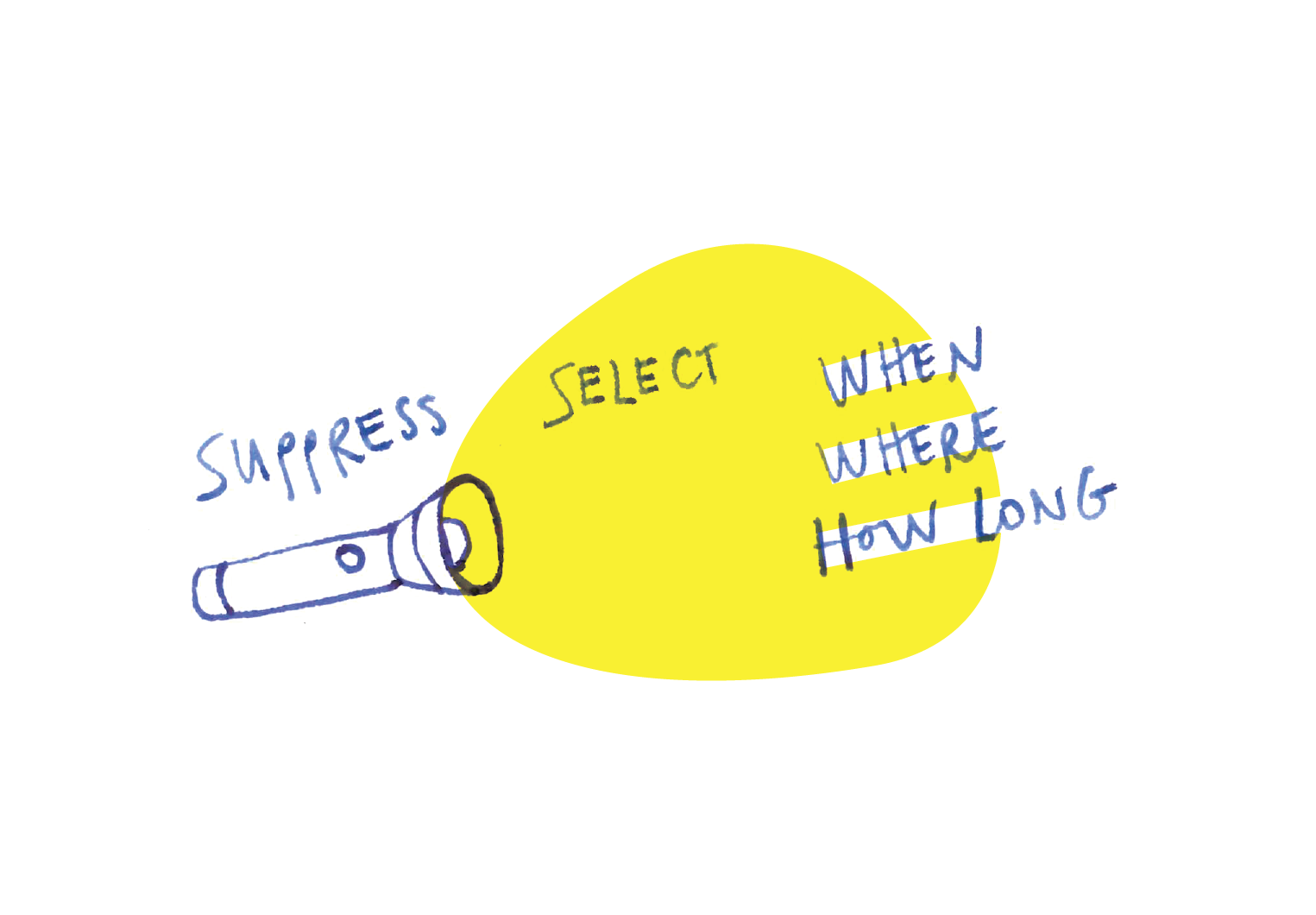Attentive Design
How to design for sustained & self-controlled attention?
Find the 7-minute answer in the IxDA archives, or watch the 40-minute answer below!
I also gave this talk at EuroIA, at the IxDA Berlin meetup, at the IxDA Lyon meetup (in French, uhlala) , and held a workshop at MozFest 2021 and UXCamp Europe 2025 with the title "Drawing time and attention”.
And here you can read about it:
The observation that inspired my research is simple: the overabundance of information–available from our digital devices at any moment–has turned attention into a scarcity. What are the (complicated and far-reaching) consequences of this problem? How could we build instead sustained and self-controlled attention with digital design?
The observation inspiring this thesis is simple: the overabundance of information–available from our digital devices at any moment–has turned attention into a scarcity. What are the (complicated and far-reaching) consequences of this problem? How could we build instead sustained and self-controlled attention with digital design?

The first part of this research looks at different psychological aspects of attention, and our relationship with information as a reward and a powerful need. The second and third part is about how the human mind copes in the attention economy. What are the most popular methods for grabbing our attention, and how do they affect our ability to 'single-task'? According to the flow theory of Csíkszentmihályi, "[t]he shape and content of life depend on how attention has been used." Can we still be happy if we cannot fully attend?
In the last part, I attempt to outline what could be attentive design. The findings are partially based on a handful of interviews I conducted with digital designers, in order to learn from their approach and to get a glimpse of where designing for attention is headed–knowing it would take just as much (or more) time as it took for the current, inattentive design patterns to emerge. Thus the research for attentive design is still wide open.
This thesis forms the theoretical basis for a proposal to represent attention as a connection–which was then presented at the conferences listed above.
A new, shorter version of the thesis is available at academia.edu.
To see more on my model of attention as a connection, follow this link!
Table of contents
Introduction
Information, attention and the brain
What is attention?
Information as a reward and information foraging
Attention and economy
The methods developed to capture attention
Ethical design in the attention economy
How is our mind affected?
Controlling the self and the phone
The trail of the spotlight
Optimal experience as happiness
Getting to attentive design
High-level ideas: manifestos, regulation, legislation
Everyday business struggles
Designer's tools and solutions
Conclusion
Appendix–Interviews: Darja Gartner&Jérémie Fontana, Ryan Rumsey, Geoffrey Dorne, Pamela Pavliscak

HEAD – Genève | 2018